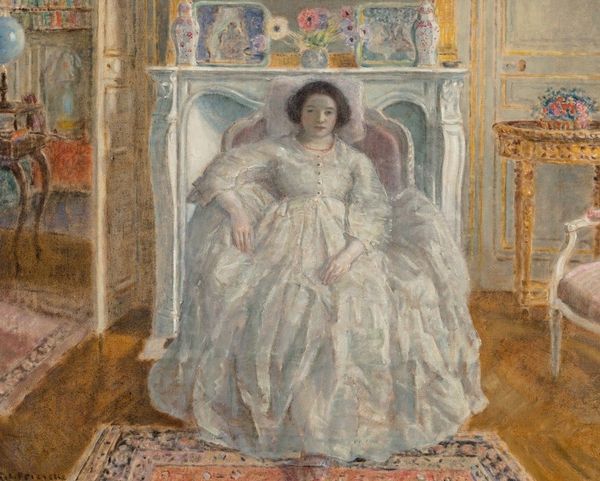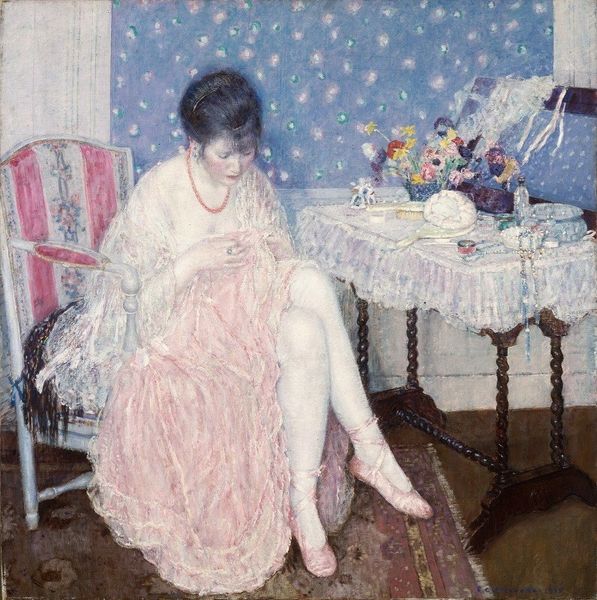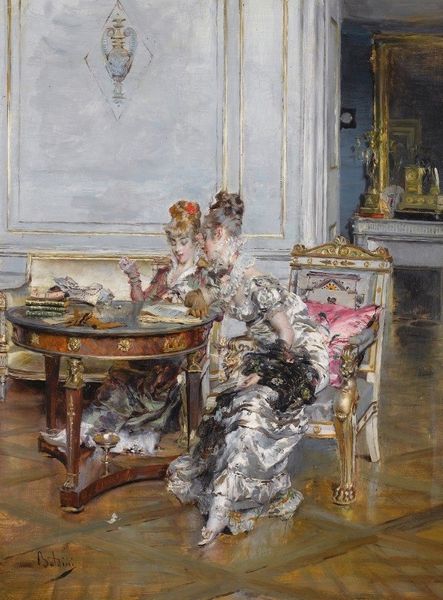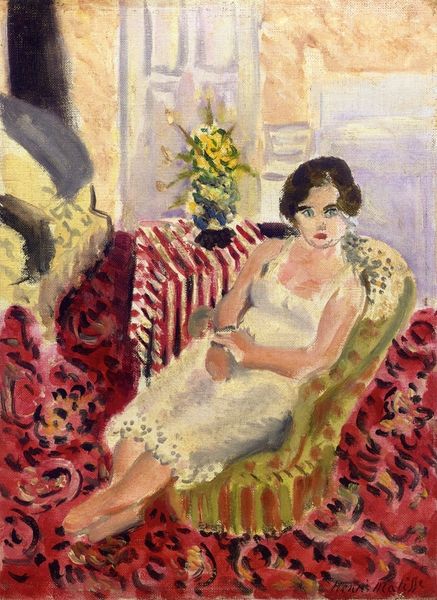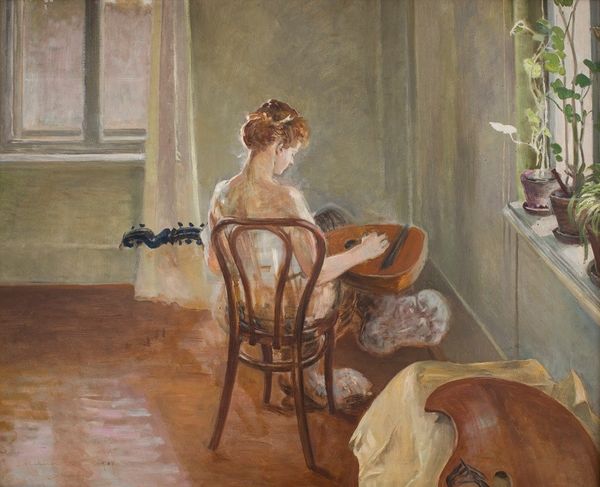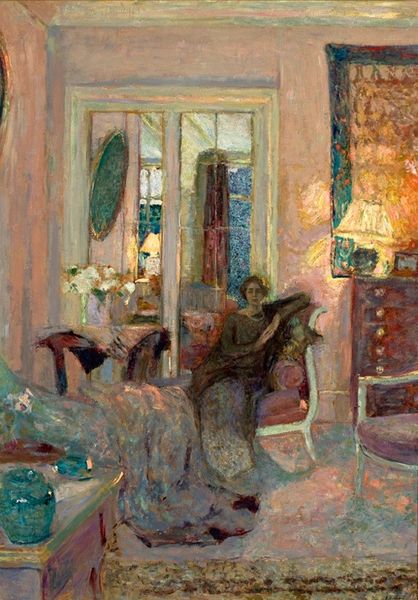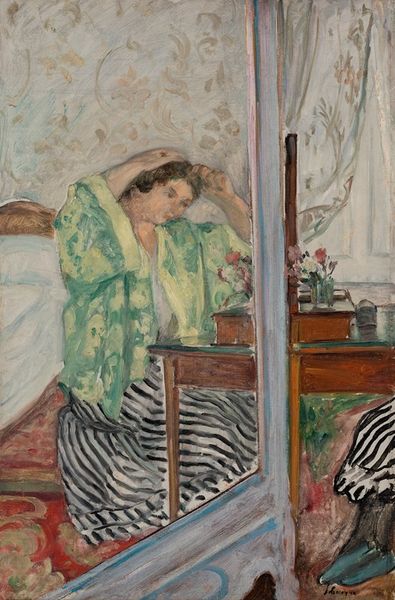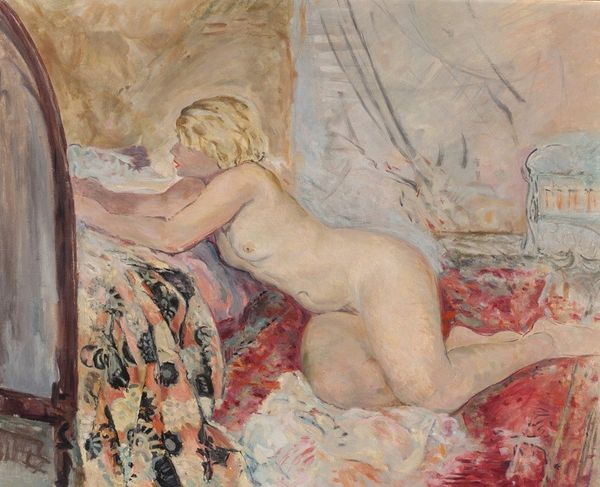
Copyright: Public Domain: Artvee
Editor: This is "In the Boudoir" painted by Frederick Carl Frieseke in 1914 using oil paints. It feels like a fleeting, intimate glimpse into a private moment. What is your interpretation of this work, considering its cultural context? Curator: It is tempting to view "In the Boudoir" solely through the lens of Impressionist aesthetics, and that's relevant, but let's consider the burgeoning 'consumer culture' of the early 20th century. Frieseke shows a woman surrounded by objects that speak to wealth, leisure, and a highly stylized domestic space. Editor: That's interesting! So you're suggesting the painting isn't just about capturing a pretty scene, but also about the social status of the sitter? Curator: Precisely! The boudoir itself was a very specific architectural and social construct. What kind of power dynamic do you think existed between the artist and his female model in that setting? How were such images viewed and consumed by the bourgeois public of the time? Editor: I hadn't thought about it that way. It seems so focused on beauty and light. I guess I was not looking beyond the surface. The way you describe it invites questioning how this private sphere was viewed in the public eye. Curator: Consider how the Impressionists sought recognition from established Salons even while breaking from academic painting. "In the Boudoir" is complex—it plays with these competing values, as does society. It also opens conversation about the objectification of women during this period. How complicit was art? Editor: This definitely challenges my initial reading! I’m walking away considering the social forces at play and questioning my assumptions about beauty and representation. Curator: Art can offer such reflection! Hopefully, others can benefit from deeper consideration of those topics as well.
Comments
No comments
Be the first to comment and join the conversation on the ultimate creative platform.

